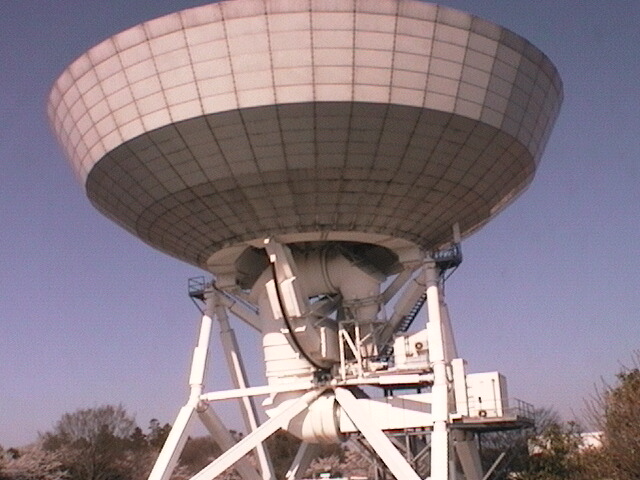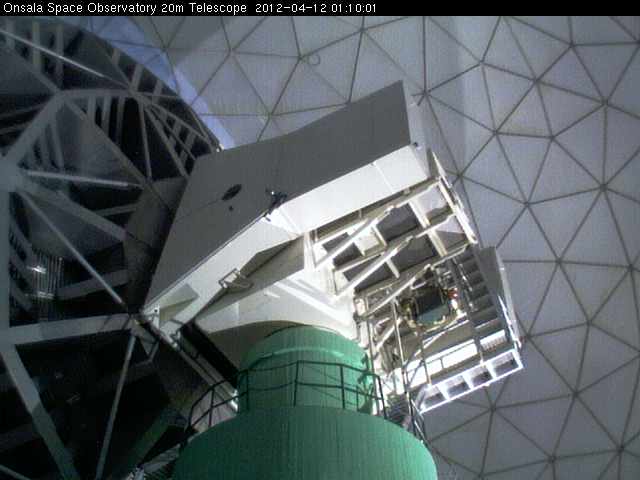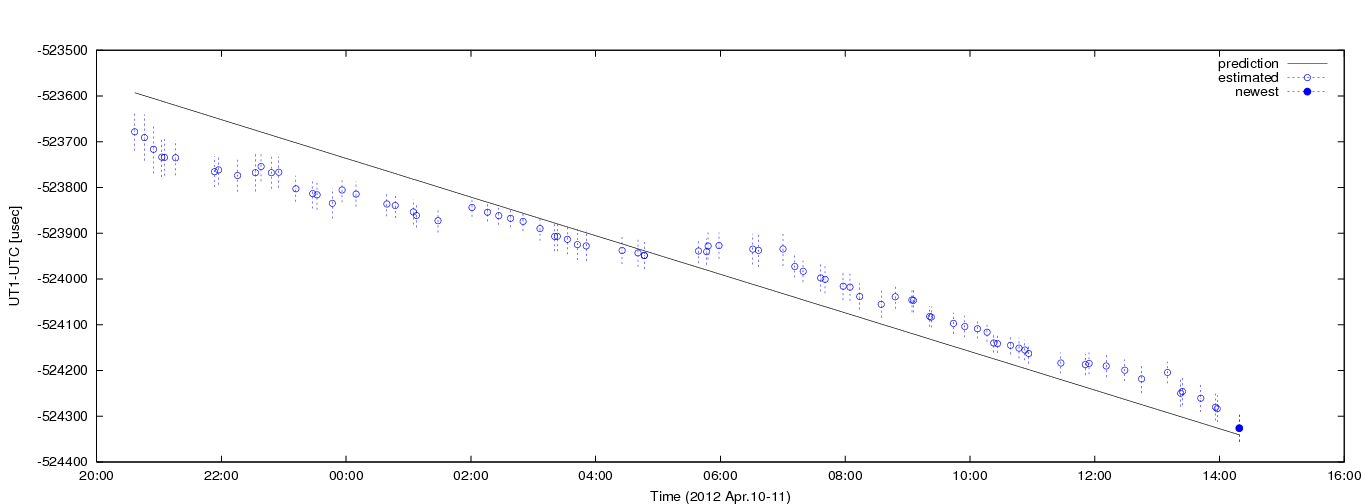The two IVS-stations Onsala (Sweden) and Tsukuba (Japan) participate both in the regular IVS-session which is currently ongoing. During the sessions the observed data from Onsala and Tsukuba are e-transferred in real-time or near real-time to the VLBI-correlator at Tsukuba. At Tsukuba the Onsala-data are converted in near real-time from the Mark5 to the K5-format, subsequentially correlated with the corresponding Tsukuba-data, and a VLBI-database is created. This database is updated after each new scan and once 35 scans have been included in the database, the database is analyzed and dUT1 is estimated automatically. With each new scan incoming the oldest scan is left out from the repeated analysis so that the analysis window includes always the 35 most recent scans. Using this strategy, dUT1 can be monitored in near real-time already during the ongoing IVS-session.
Figures 1 and 2 show the two telescopes involved.
Figure 3 shows correlation plots of the most recent scan correlated.
Figure 4 show the continuously determined dUT1 results using C5++ with a priori values.
The dUT1 results using C5++ eopi format:r1528.epoi
Previous Session Next Session Return to Index




